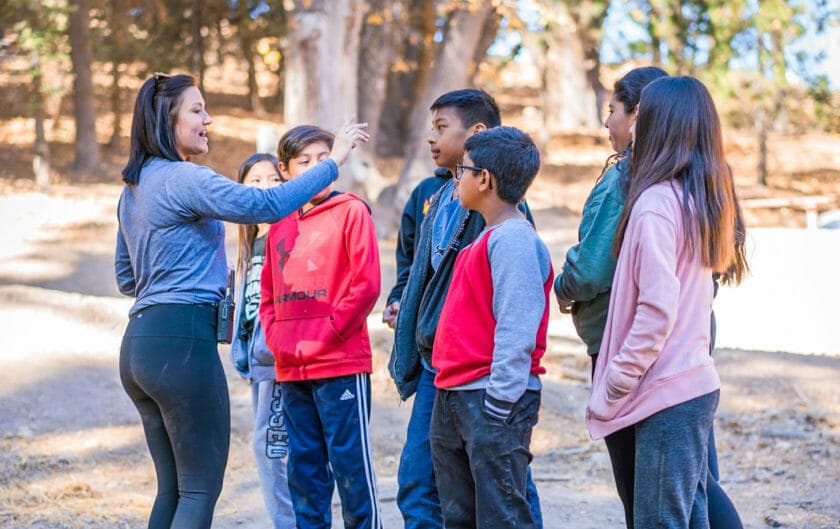Students learn the importance and dynamics of food chains/webs and how species depend on one another for survival. In a fast-paced activity, students are assigned an identity: carnivores, herbivores, or omnivores. They must search for food while avoiding predators: their peers!
What’s Covered
Students learn about biodiversity and the dynamic relationships between living organisms and their non-living environmental factors within an ecosystem, with a specific focus on the San Bernardino National Forest. Through building a physical food web and examining model skulls, students investigate the interdependence of producers, consumers and decomposers.
Lessons & Activities
The class culminates in (2) active games— “Oh, Deer!” and “Animal Survivor”—where students are assigned a role (predator, prey, or environmental resource) and must acquire the resources needed to survive while escaping from predators. Through these lively activities, students experience the impact that changes in populations and the physical environment can have on an ecosystem overtime.
Constructing a Food Web
“Oh Deer!”
Animal Survivor
Educational Standards
Applicable Common Core/Next Generation Standards:
- NGSS-MS-LS2-3: Develop a model to describe the cycling of matter and flow of energy among living and nonliving parts of an ecosystem.
- NGSS-MS-LS2-4: Construct an argument supported by empirical evidence that changes to physical or biological components of an ecosystem affect populations.
- NGSS-MS-LS2-5: Evaluate competing design solutions for maintaining biodiversity and ecosystem services.
- NGSS-5-LS1-1: Support an argument that plants get the materials they need for growth chiefly from air and water.
- NGSS-5-LS2-1: Develop a model to describe the movement of matter among plants, animals, decomposers, and the environment.
- NGSS MS-LS2-2: Construct an explanation that predicts patterns of interactions among organisms across multiple ecosystems.
- NGSS 5-PS3-1: Use models to describe that energy in animals’ food (used for body repair, growth, motion, and to maintain body warmth) was once energy from the sun.
Ready to Get Started?
Accelerate your students’ learning with our exciting curriculum. Learn more about this hands-on, experiential education activity today.
